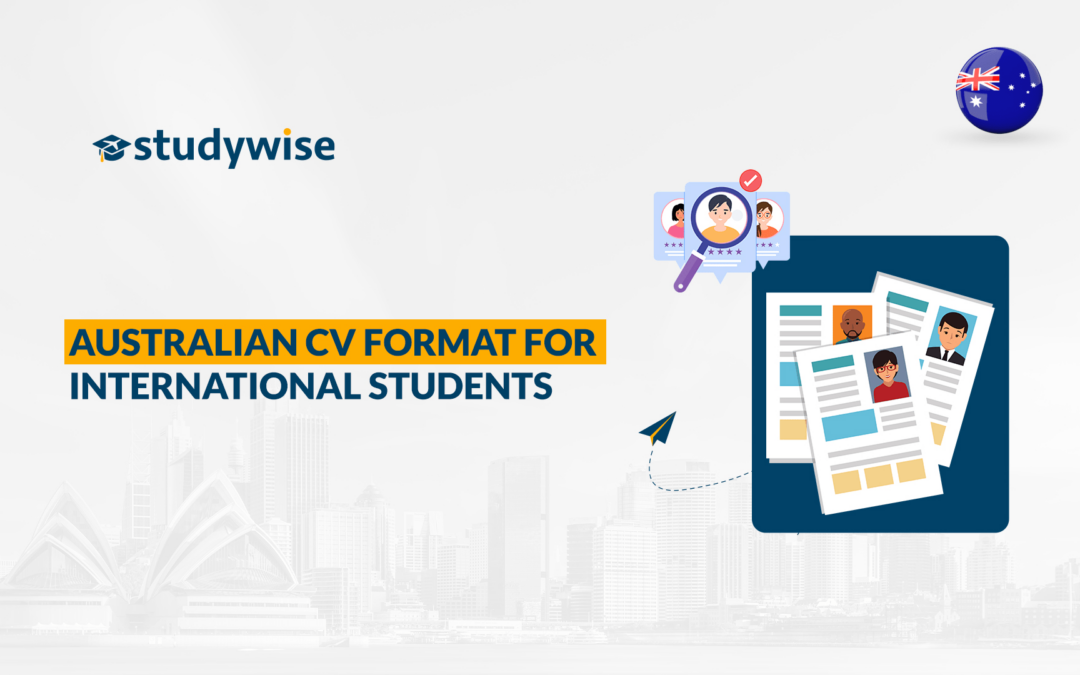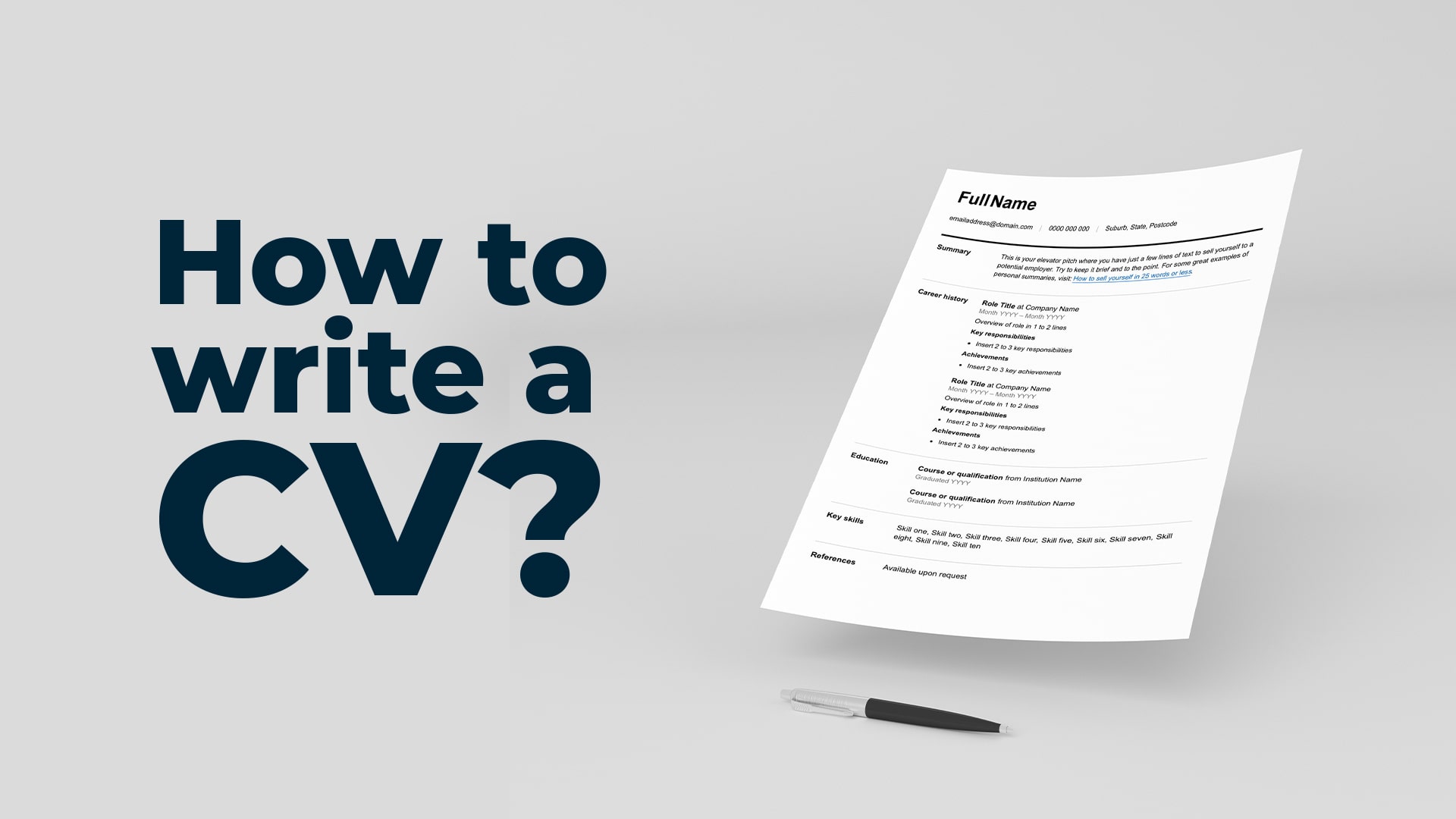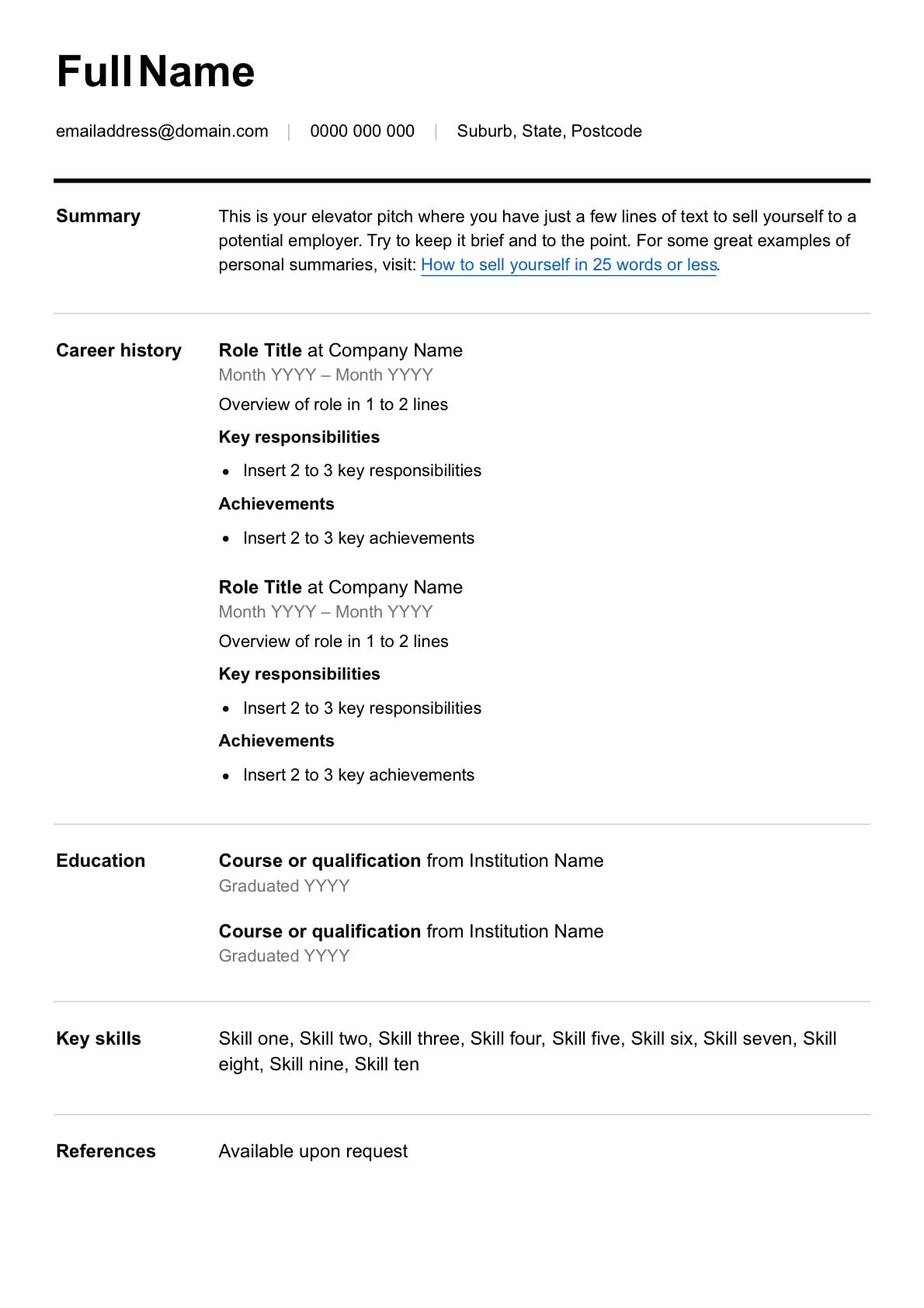Are you planning to work or study in Australia? Congrats, you have certainly made the best decision of your life. But before you pack your bags and set off on your journey, you should be familiar with the Australian CV format. This country has its own unique and specific expectations for CVs.
We all know that creating a great first impression is crucial, and that starts with your CV. Don’t worry, though, we are here to lend a helping hand. In order to impress Aussie universities or your employers, it’s important to make sure that your CV is according to the Australian requirements and is customized to their expectations. Trust me, taking the time to format your CV to match local expectations can be a game-changer!
In this guide, I’ll provide you with the standard format for an Australian CV, along with valuable grammar and language structure tips and examples. So, let’s get started to find out 8 Tips For Australian CV Format for International Students:
Tips For the Australian CV Format
Ready to start building a standout CV that will boost your chances of studying or working in Australia? Let’s jump right into it.
1. Include all the Essential Details
By composing a well-rounded and effective student CV, you can increase your chances of success. So, create a CV that showcases your skills and accomplishments. There are certain elements that your CV must have. These may include the following:
- Contact Details: Begin with your essential contact information at the top of the CV.
- Executive Summary: Craft a brief executive summary (3-5 sentences) highlighting your career objectives, skills, and any relevant experience gained during your academic journey.
- Education: Showcase your educational background, listing the most recent qualifications first. If applicable, include any academic awards or prizes you’ve received.
- Personal Skills and Qualities: Shed light on all of your personal qualities and skills that align with the requirements of the role, such as teamwork, time management, writing, or any other relevant attributes.
- Work Experience (if applicable): Outline any part-time jobs, internships, or volunteer experiences, listing the most recent first. Highlight responsibilities and skills gained during these experiences.
- Professional Achievements (if applicable): If you have achieved notable accomplishments during your academic or work experiences, detail them for added impact.
- References: Include references from academic or professional sources to ensure that you have obtained permission from individuals beforehand.
2. Try to Craft a More Detailed CV
In Australia, creating a CV follows a slightly different approach compared to the one-page standard in the US and Europe. A concise resume is still favored for those new to the workforce or recent graduates. But in Australia, a CV of 2 to 3 pages demonstrating a more detailed account of your experiences is generally more appreciated.
3. Pay Utmost Attention to the Education Section
Education holds significant importance in shaping your professional profile, and its prominence on your resume depends on factors such as your age and the industry you’re targeting. For roles that mandate specific qualifications, like nursing, teaching, or accounting, the education section should take a prominent position, typically placed near the top of your resume.
However, if your academic background isn’t as extensive or relevant, you might place this section beneath your work experience. Moreover, if you’re currently pursuing a qualification, make it clear that it’s a work in progress, especially relevant for international students juggling work and studies simultaneously.
Next, include details like the institution’s name, graduation date, and the qualification received, along with the country. Additionally, showcase any short courses you have undertaken, be it in business writing, presentation skills, or coding.
For those in the early stages of their careers, high school qualifications can be included. However, details about primary school education shouldn’t be added. This approach tailors your education section to align with industry expectations and your unique professional journey.
4. Be Precise
When constructing your CV, try to deliver a clear and concise presentation. Utilize a resume template to organize information effectively. Keep in mind that employers typically spend only 6 to 7 seconds reviewing a CV, so focus on presenting relevant and persuasive details. Aim to make your CV a compelling image of your skills and experiences, aligned with the specific requirements of the position you’re applying for. Moreover, limit your CV to 2 pages and avoid unnecessary information that may distract from your key qualifications.
5. Use Australian English In Your CV
Make your CV according to Australian English. Unlike American English, Australian English has distinct spelling variations, such as ‘s’ versus ‘z’ and ‘ou’ versus ‘o’. For instance, ‘analyse’ is the preferred Australian spelling, while ‘analyze’ is American. Similarly, ‘favour’ aligns with Australian English, while ‘favor’ is the American counterpart.
Ensure that your CV reflects Australian English conventions by adjusting the spell-check settings in your word processing program, like Microsoft Word, to Australian English. In addition, to be more precise, you can use tools like Grammarly, which will allow you to choose Australian English for accurate spelling checks.
By presenting a CV with the appropriate language preferences, you can increase your chances of success and make a positive impression on Australian reviewers who may be particular about these linguistic details.
6. Follow a Particular Layout
Try to follow a certain Australian CV format. It is advisable to maintain a clean and easily readable page layout. Opt for widely accepted fonts like Times New Roman or Arial. Given that A4 is the standard printer paper size in Australia, ensure your document is formatted accordingly.
In order to enhance document organization, include a header on each page to prevent any potential separation issues. Additionally, add page numbers to the bottom of each page to ensure the smooth flow of information in case of any disarrangement. By following these formatting guidelines, your CV will present a polished and professional image to Australian evaluators.
7. Conduct Thorough Research
Before crafting your CV, research everything about the educational institution or industry you are applying to. Ensure that you possess the fundamental skills and experiences relevant to the academic setting or field. Admissions committees may review numerous CVs, so aim for clarity and brevity. Make every word count to increase the likelihood of your entire CV being thoroughly examined.
8. Be Truthful
Approximately 40% of applicants fabricate their employment history, 20% exaggerate their educational achievements, and up to 30% provide misleading references. Institutions have various means to verify information, so honesty is the key to success. Hence, make sure to avoid unnecessary risks that could impact your academic and professional journey. Therefore, be honest and give precise and genuine information regarding your qualifications or work experiences (if any).
Here is a sample of the Australian CV format that can certainly help you while composing your CV:
How Can StudyWise Help You?
If you need further help while making your CV or need assistance during your visa processing journey to the Land Down Under as an international student, all of your worries are going to end as we are here to make things easier for you. At StudyWise, we have a team of proficient student advisors and visa experts with whom you can work together and make your dreams a reality. So without any further ado, contact us and begin your journey to your dream country.
For your journey as an Australian student in the Land Down Under the following blogs might also prove to be useful for you, so consider giving them a read:
- Learn About the Life of International Students in Australia
- Why Study in Australia in 2024: The Ultimate Guide
FAQs:
Is it necessary to include extracurricular activities in your CV?
Australian universities often value well-rounded individuals. So, it’s always better to include relevant extracurricular activities, such as clubs, sports, volunteer work, or leadership roles. This provides a holistic view of your capabilities and interests.
What is the best resume format for Australia 2024?
In 99% of cases, the best format for an Australian resume is the reverse chronological format. This means organizing your work history by date, with the most recent role appearing first.
How do I write my first resume in Australia?
Firstly, while creating your CV for Australia, choose a professional template for your Australian CV and include accurate contact details, a concise career objective, and clear education qualifications.
If you are lacking work experience, emphasize relevant internships or coursework. List applicable skills and consider optional sections for certifications or awards. Maintain a clean format, and proofread thoroughly before submission to ensure an impactful resume.
How do I address cultural differences in my CV as an international student?
As an international student, it’s important to address cultural differences in your CV to showcase your cross-cultural experiences, language proficiency, and adaptability. These skills demonstrate your ability to work effectively in diverse environments and can make you a valuable asset to any organization.
Summary
In summary, crafting your CV according to the Australian CV format can help you create a winning first impression on Australian reviewers as an international student. It involves creating a detailed 2 to 3-page document with essential sections like contact details, an executive summary, education, personal skills, work experience, and references.
On top of that, don’t forget to pay close attention to Australian English language nuances and adhere to a clean layout with widely accepted fonts and formatting standards. In essence, thorough research, concise presentation, and honesty in detailing experiences are key factors for success in making a positive impression on admissions committees.





